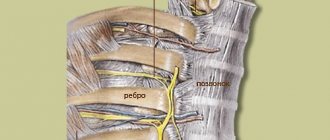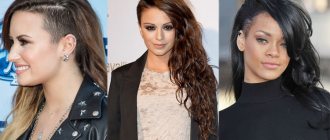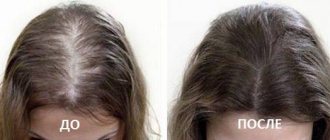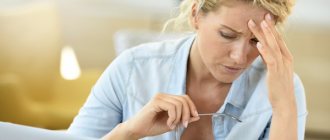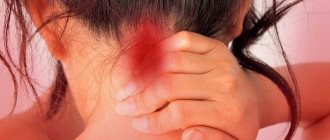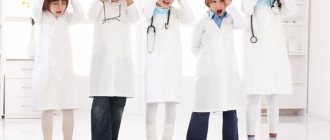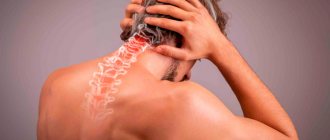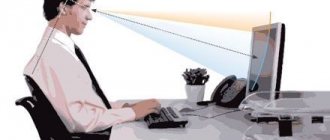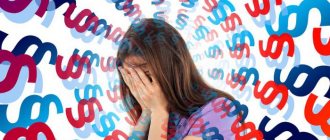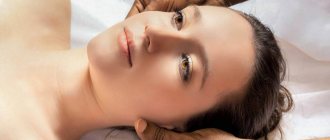Acupressure for headaches is one of the effective remedies. One of the most common methods is the method of rubbing the earlobe, but if this does not help, you need to find the pain point a little lower on the neck and massage it with light movements. If you experience pain when pressing, this means that you are pressing on the right point.
You can also use specific points during the massage. Since there are a lot of them on the head, you need to know exactly which ones you need to press. Here is their description:
- TIAN-RUN - Located behind the ear, more precisely on the back of the head in the depths of the edge, which is located below. To do everything correctly, you need to clasp your forehead with your palm and thus hold your head. Rub with the thumb of your right hand counterclockwise for approximately 5 minutes.
- BAI-HUI - to the top of the ear and from the middle of the crown. You need to rub until you feel pain for two minutes. The patient should lie down or sit.
- TAI YANG - from the temples to the eyebrow line. Both points are massaged simultaneously, but always against the arrow. Ironing takes approximately 4 minutes. The eyes are closed during the massage.
- TIAN – ZHU – on the back side of the hair. With 4 fingers you need to clasp the lower part of the jaw and the front of the neck. Press with your thumb for a couple of minutes.
- HE-GU - press with your thumb on the point between the knuckles of the index and thumb. Act for three minutes.
Massage for headaches at home
The patient can do the massage himself. To do this you need:
- Initially, you need to rub the scalp for 4 minutes. Rub to the temple and from the back of the head in a circular motion. With each circle you need to strengthen your movements.
- Massage your temples up and down in a spiral from one to the second temple. Starting with the fingers and ending with the knuckles.
- The whiskey is rubbed with the middle and index fingers.
- The neck is massaged in the form of a spiral to the back of the head and from the temple.
- From the middle of the head to the bottom from the top.
- Use your thumbs to press lightly behind the ears.
- Lightly tapping your fingers, starting from the back of the head and ending with the forehead and back.
- Use your palms to stroke your head.
During the massage, you can use brushes and combs.
Medical massage
Massage after a stroke
A stroke is an acute disorder of cerebral circulation.
This disease is recognized as one of the most important health problems because it is the third leading cause of death. Unfortunately, in recent years this disease has become significantly younger.
One of the most common severe complications after a stroke are motor disorders, usually unilateral paralysis of the arms and legs. Timely initiation of treatment and rehabilitation procedures, their systematicity and duration, will help to quickly restore activity to nerve cells that are in a state of reduced activity or complete inhibition, which will speed up the patient’s rehabilitation. The emotional state of the patient and the person caring for him is no less important. A positive outlook on what is happening, determination, and the presence of various interests helps to overcome the disease.
The recovery period must begin a few days after the stroke. First of all, it is necessary to determine the amount of permissible physical and psycho-emotional stress.
Specialized centers and rehabilitation departments provide enormous assistance. The developed complexes for step-by-step rehabilitation of a person can be used at home. These complexes allow the patient to gradually return to normal and even active life. Upon returning home, the patient’s rehabilitation should initially be carried out under the supervision of a neurologist or rehabilitation specialist.
To perform massage manipulations and exercises at home, the massage therapist should:
- collect complete information about the presence of contraindications;
- find out which muscles in the patient are relaxed and which are tense;
- master the necessary massage techniques;
- learn how to properly position paralyzed limbs.
Performing massage and therapeutic exercises allows you to:
- improve lymph flow and blood flow in the body, which is especially important for paralyzed limbs;
- promote the restoration of motor functions in the affected limbs;
- prevent the occurrence of contractures (contractura, lat. - tightening, compression, narrowing) in physiology, prolonged, persistent, often irreversible contraction (rigor) of a muscle fiber or its section;
- reduce muscle tone of spastic muscles and the severity of conjugal movements;
- reduce the intensity of pain or get rid of it completely;
- influence the patient’s positive attitude;
- prevent congestive pneumonia in the elderly;
- prevent the formation of bedsores.
Recommendations for massage after a stroke
It is recommended to start massage as early as possible, if you feel well - literally on the second day. So, for ischemic stroke without complications and in the absence of contraindications, massage is prescribed for 2-4 days, and for hemorrhagic stroke, for 6-8 days. The duration of the first procedures varies from 5 to 10 minutes, gradually extending from 10 to 30 minutes. The increase in the intensity of exposure is strictly individual and depends on the patient’s condition. The course consists of 20-30 procedures, which are carried out daily. After a 1.5-2 month break, massage treatment is repeated.
Each massage technique is repeated 3-4 times. From the 1st to the 3rd session, the massage is performed only in the shoulder and thigh area, without turning the patient onto his stomach. From the 4th-5th procedure, taking into account the patient’s condition, the area of the chest, forearm, hand, lower leg and foot is added. Cover the back and lumbar region 6-8 times, placing the patient on his healthy side.
Massage while lying on your stomach can be performed at a later date in the absence of contraindications associated with heart disease. During periods of strict bed rest, massage can only be performed by a highly qualified massage therapist, preferably under the supervision of a doctor. At home, a caregiver can perform a massage only during the period when the patient’s condition has significantly improved. In order to increase the effectiveness of the performed massage and therapeutic exercises, it is desirable to pre-warm the paralyzed limbs. For these purposes, you can use a salt heating pad, paraffin and ozokerite applications, and a warm blanket.
The massage begins from the front surface of the affected leg, because with hemiparesis (paralysis) the lower extremities are affected less than the upper ones. Next, massage the pectoralis major muscle. Then they move to the shoulder, forearm, hand, fingers.
Performing massage movements on the back of the leg - first massage the thigh, then the lower leg, foot. All movements on the back are carried out along the lymph flow.
Techniques used: various types of superficial stroking, light rubbing, continuous vibration (shaking, shaking). So, for a group of spastic muscles, light stroking and, somewhat later, rubbing techniques are used. For some muscles, light vibration is acceptable.
The following are susceptible to spastic conditions:
- muscles of the inner (front) surface of the shoulder, forearm and palmar surface of the hand;
- pectoral muscle on the sore side;
- muscles that extend the knee (quadriceps) and externally rotate the thigh (obturator externus and quadratus muscles);
- muscles of the posterior surface of the lower leg (gastrocnemius, posterior tibial, long flexor and 1st fingers);
- muscles of the sole.
On non-spastic areas: the back of the arm, the front of the shin, the back of the foot, deep stroking techniques, intense rubbing, and even light kneading are used.
Any striking techniques (patting, tapping, chopping, etc.) are contraindicated.
Preparing the patient for massage
First of all, it should be remembered that anxiety, physical stress, fatigue, and cold impair the ability to move. In this regard, before starting a massage, you should achieve a maximum reduction in muscle tone, i.e. muscle relaxation. To do this, special relaxation exercises are performed. First - on a healthy area, then - on the affected one. To check whether the patient was able to relax the muscles, it is necessary to lift the patient’s healthy limb and, insuring it from a blow, release it - the limb should fall freely. If the patient lies on his back, then place a cushion under his knees and a pillow under his head. When synkinesis (friendly movements) occurs, the non-massaged limb is fixed with a bag of sand or salt weighing about 0.5 kg. Lying on your healthy side, you can massage the outer surface of your leg. With the patient lying on his stomach, the back surface of the leg is massaged, while a small pillow is placed under the stomach and head, and a bolster is placed under the ankle joints. If there are disturbances in the functioning of the heart, the patient is massaged on his side. To maintain warmth, the patient is covered with a blanket, exposing only the massaged area for massage.
Massage technique
Leg massage Thigh While lying on your back, massage the front and inner surfaces of the thigh. Begin with light superficial stroking along the inner, middle (front) and outer surface of the thigh. The movements are directed from the knee joint to the groin area. Then they are joined by light, slow spiral and zigzag strokes. The correct execution of these movements is a slight relaxation of the spastic muscles. Then light rubbing with the pads of four fingers and the base of the palm is added to these techniques. Each technique is repeated 3-4 times. With the patient lying on his stomach or healthy side, a massage is performed on the back of the thigh. On the back of the thigh there are muscles involved in hip extension, to which, taking into account their spastic state, gentle techniques such as stroking and light rubbing should be applied. They are performed by moving from the popliteal fossa to the gluteal fold. The buttock is massaged with stroking movements, starting from the posterior surface of the sacrum towards the greater trochanter (protrudes on the upper outer surface of the thigh, can be easily felt during palpation).
Lower leg Moving on to the lower leg, take into account that on its front surface there are extensors of the foot, which are usually less spastic. Therefore, more intensive techniques are allowed. They start with superficial strokes, moving on to deeper ones. Next, more energetic rubbing techniques are used, as well as transverse and longitudinal kneading. The massage is carried out with all fingers and palms, from the ankle to the knee joint. The gastrocnemius and soleus muscles (responsible for flexion of the knee joint and foot), extending to the back of the lower leg, are very spastic. They are massaged using a gentle technique. Movements begin from the heel tubercle towards the popliteal fossa.
Foot On the back of the foot there are muscles (digit extensors) with mild spasticity. Therefore, the techniques of stroking, rubbing, and kneading are used. The masseur fixes the foot, placing the patient’s heel in his palm, with the toes pointing upward, and with the second, third and fourth fingers of his free hand he massages its back surface from the tips of the fingers to the shin. Finishes by stroking and rubbing the interosseous spaces with the first finger, which will clearly stand out in the form of indentations on the back of the foot if you spread your toes. On the plantar side of the foot there are muscles with increased tone, which are massaged using a gentle technique, moving from the toes to the heel.
Hand massage During bed rest, hand massage is carried out with the patient lying on his back, and at the end in a sitting position (in this case, the patient’s hand is placed on a nearby table). Massage of the pectoralis major muscle On the affected side, this muscle is in a state of hypertonicity, so the massage is performed using gentle techniques: superficial stroking, very light rubbing with the pads of four fingers and light vibration in the form of shaking or shaking. Shaking is carried out using the first and second fingers, as an option - you can put the hand on the chest and move it along the massaged area in the direction from the sternum to the armpit.
Shoulder The trapezius and deltoid muscles located here do not have increased tone, so deep stroking, intensive rubbing and light kneading can be used. It is necessary to move from the VI-VII cervical vertebrae (if you lower your head to the chest, the VII vertebra will protrude more than the others) to the end of the deltoid muscle, rubbing and kneading the latter well. Then they move on to massaging the triceps muscle, which is an extensor of the forearm. The tone of this muscle is not so strong, therefore, if the possibility of voluntary movements is completely lost, it is advisable to start the massage with this particular muscle. Here they use the techniques of superficial and deep stroking, vigorous rubbing and light kneading. The movements are directed from the elbow joint along the outer back surface of the shoulder to the shoulder joint. Next, they move on to massage the biceps muscle, which is a flexor of the forearm and shoulder. Due to the fact that she is very spastic, only light stroking and rubbing are used. The movements proceed from the ulnar fossa along the inner anterior surface of the shoulder, reaching the armpit. When performing these manipulations, you should be especially careful and careful, since the brachial artery, veins and nerves pass along the inner surface of the shoulder (on the internal groove), and under no circumstances should any pressure be applied to them.
Forearm It is advisable to start the massage with the muscles of the posterior (outer) surface of the forearm (extensors of the hand and forearm), since they are overstretched. Perform techniques of superficial and deep stroking, rubbing, kneading. The movements are directed from the wrist joint along the back surface of the forearm to the olecranon process. Then they move on to the muscles of the anterior (inner) surface of the forearm (flexors of the hand and forearm) - they are spastic, so they are only lightly stroked and rubbed in the direction from the wrist joint to the ulnar fossa.
Hand and fingers Due to overextension of the muscles of the back of the hand, massage begins precisely from the back of the fingers, moving to the back of the hand. Perform energetic techniques: deep stroking, rubbing, kneading. Due to the high tone of the muscles of the palmar surface of the hand, only superficial stroking is performed.
Back massage The patient is placed on his stomach or healthy side, with a pillow placed under his head. When performing a massage, all techniques are used, but in a soft and gentle manner, so as not to increase muscle tone, while improving tissue nutrition. Direction of movements along the lymph flow.
Exercises for stroke
Passive movements can be performed 1-2 weeks after a stroke, if the patient’s condition allows. Such exercises stimulate the appearance of active movements, improve lymph and blood flow, precede the formation of contractures, and reduce muscle spasticity.
Sequence of development of arm joints: 1. shoulder; 2. elbow; 3. wrist; 4. finger joints.
Sequence of development of leg joints: 1. hip; 2. knee; 3. ankle; 4. finger joints.
That is, we first work with large joints, then move on to smaller ones. You need to start with healthy limbs, then work on the paralyzed ones. To begin with, perform from 1 to 5 movements, gradually increasing the number of times to 10. If the patient’s well-being allows, the exercises should be performed slowly, smoothly and in full, once in the morning in combination with a massage, the second time at the end of the afternoon rest.
It is necessary to ensure that each movement is performed in isolation. Therefore, the caregiver must fix the patient's limb above the joint with one hand, and with the other perform movements below the joint.
Be sure to teach the patient to slowly inhale and then exhale through slightly parted lips, while pronouncing the sound “w-w-w” and without holding his breath. This extended exhalation helps relax the muscles during passive and active movements. A simple rolling pin can serve as an assistant in relaxing the muscles of paralyzed limbs. It is necessary to roll the patient's palms and feet over its surface. The patient should also be told that when muscle relaxation occurs, a feeling of heaviness arises in the affected limb. It is advisable to show yourself the state of the muscles: at rest, during tension, during relaxation.
When the patient is able to perform the exercises himself, you can introduce exercises from the complex of active gymnastics, which are more conducive to the restoration of movements. Usually this opportunity appears in the third week after a stroke. Lying on his back or healthy side, the patient performs exercises with the affected arm and leg that he can do (flexion, extension, abduction, adduction, rotation) for 10 to 30 minutes twice a day. To make the task easier, the patient can hang his arm or leg on a towel pre-attached to something. You must not allow yourself to become overtired, so you need to take 2-4 breaks of 2-4 minutes each. Also, the volume of active movements increases significantly: exercises with cubes, pyramids, tops, modeling from plasticine, fastening and unfastening buttons, tying and untying ropes.
As the sick body recovers, it is recommended to perform exercises to restore and strengthen all the muscles of the body. A set of such exercises is similar to regular morning exercises.
Treatment by position
To prevent the development of contracture of paralyzed limbs, which will make it difficult to restore impaired movements, you should learn how to position them correctly. It is necessary to start doing this during the period of bed rest. Sequence of laying the limbs in a supine position. The extended paralyzed arm is placed on a pillow and turned palm up. At the same time, they take it to the side at an angle of 90º (in cases of severe pain, you can start with a smaller angle of abduction, gradually bringing it to 90º), making sure that starting from the shoulder joint and along the entire length, the arm is in a horizontal plane. In this case, a roller filled with cotton wool or padding polyester and wrapped in oilcloth is placed in the forearm cavity. The hand with the fingers spread to the side, on the palm side, is fixed with a splint cut from some light material and covered with material (bandage, gauze - for softness), repeating the shape of the arm and hand. They bandage it to the middle of the forearm. To fix the entire arm, a bag of salt or sand weighing 0.5 kg is placed on the forearm area. The affected leg is bent at the knee 15-20º, placing a cushion under it. The foot is bent at an angle of 90º, while fixing it in a special box, so that the foot rests with the sole against one of its walls. And the box itself is secured so that it is motionless. With this position of the limbs, the patient should remain for 1.5 to 2 hours.
The sequence of laying the limbs in a lying position on the healthy side
The patient's arm is bent at the shoulder and elbow joints and a pillow is placed under it, and the leg at the hip, knee and ankle joints is placed on another pillow. With this position of the limbs, the patient should remain for 30 to 50 minutes. The recommended positions of the limbs should be changed from a supine position to a lying position on the healthy side every 1.5 - 2 hours. With the exception of time: allocated for food, therapeutic exercises, massage, as well as afternoon rest and night sleep/
Neck massage for headaches
Since a common cause of headache is a problem with the cervical vertebra, you need to massage the neck. To do this, you need to follow the step-by-step instructions:
- Sit on a chair, lean back on it and lower your head. It is important that at this moment it is comfortable, and the person can easily relax.
- Run your palm along the back of your head, going down to your neck and ending with your shoulders.
- With an effort, move your right hand from the left back side of the neck to the chest, and with the left hand from the right side of the neck and also to the chest.
- The back of the neck is massaged towards the middle of the shoulder blades
- Starting from the shoulder blades and leading to the shoulders and ending with the neck. All actions begin with the work of the fingers and end with the knuckles.
- Tapping your fingers should go over the neck, shoulders and chest.
- At the end, you need to gently stroke from the neck to the chest.
How to relieve headaches with massage:
- You can do a general head massage. To do this, you need to massage your hair using movements that are used when washing your hair. Massaging should last 5 minutes.
- Massaging your temples, this method helps not only with headaches, but also with high blood pressure.
- Neck massage helps you relax
- In any case, it is important to be in a comfortable position and relax during the massage.
- Movements should be soft and smooth.
- It is advisable to use oil that nourishes the skin and hair.
- Relaxing music such as birdsong or the sound of the surf.
- The best time for a massage is in the evening before bed.
- It is advisable to drink relaxing green tea after the session.
You can relieve headaches with finger massage . To do this, between the thumb and index finger. You need to measure 2 cm from the edge of the skin. This is where one of the points is located.
Another point is located on the outside, three centimeters above the wrist. You need to feel between the bones. There is also one on the bend of the little toe. At the junction of the toe and foot.
The points are located on both the arms and legs. The main thing is to find them and click in the right place.
Massage-induced effects
Mechanical and physical effects on the tissues of the head, bioactive points, neck and collar area help reduce pain and in some cases completely get rid of them due to several massage effects:
- Blood flow in tissues is activated during massage. In turn, this helps get rid of accumulated toxins, improves the supply of oxygen molecules to the brain, and reduces blood pressure;
- The spasm is relieved from the vessels, they expand to a normal level;
- Massage has a relaxing and calming effect, which helps to cope with cephalalgia caused by stress, fatigue, and prolonged tension;
- The conduction of nerve impulses improves, which stabilizes the functioning of the NS organs.
With osteochondrosis of the neck, due to destructive-dystrophic changes in the vertebrae, the nerve bundle and blood vessels are clamped. As a result, the brain suffers from hypoxia, which is the main cause of cephalgia and dizziness. In order for your head to stop hurting, you need to remove this clamp and massage does the best job of doing this. It also helps with noise, decreased quality of sleep, and apathy.
A positive result of massage procedures can be considered an improvement in the condition of the scalp and hair. Patients who have completed a full course of massage from specialists note a decrease in the amount of dandruff, strengthening of hair, increased shine and growth.
Features of therapy
Massage is often used to relieve headaches. This method has a number of features, namely:
- no need to take medicine or tinctures;
- The work involves hands and objects with which you can achieve relaxation.
- the body should be in a relaxed state.
- It is important to follow all instructions so as not to cause harm. Since inaccurate pressing on one point or another can lead to serious consequences. Before starting a massage, you need to familiarize yourself with the contraindications and make sure that the patient does not have them.
The operating technique is indicated in the description of working with a point. If everything is done correctly, then the patient will experience the following feelings:
- slight tingling,
- slight sensation of a weak electric shock,
- goose bumps appear
- the area of skin becomes numb.
At the end, a slight warming appears in the area that is massaged.
Osteopathy or massage
The range of effectiveness of osteopathy is much wider than that of massage. Osteopathy can not only successfully cope with tension headaches in 1-2 sessions, but also help with migraines, intracranial pressure disorders, pain after injuries and operations where the massage therapist is powerless. Moreover, an osteopath is often also a neurologist, so there are no problems with making an accurate diagnosis of headaches. If necessary, the osteopath will refer you for additional research and will not miss a dangerous disease, which can sometimes be hidden behind a headache.
In our center, we use the most modern osteopathic techniques to treat headaches, which do their job much more effectively than massage. Come for an appointment and you will feel the full power of osteopathy for yourself.
Contraindications
When working with points on the body, you need to be extremely careful. There is a wide variety of massage options that can be used to treat headaches, namely:
- hand massage for headaches,
- neck massage,
- head massage,
- full body massage.
But very often, due to improper pressure during pressure on the body, the patient can be harmed. Such manipulations can lead to complications of chorionic disease, can increase blood pressure, cause nausea, and even worsen headaches.
Manipulations should not be performed if the patient:
- increased level of alcohol in the blood,
- increased body temperature,
- blood poisoning,
- tuberculosis,
- menstruation or pregnancy,
- brain diseases,
- cancer tumor,
- ear infection,
- papillomas, warts, wounds, etc. are observed on the skin.
Children under two years of age and older people, as well as those under the influence of drugs, should also avoid this type of manipulation.
How is head massage beneficial?
The procedure improves local blood and lymph flow, stimulates oxygen transport and metabolic processes. Manual techniques help the skin absorb the active components of cosmetics. Thereby:
- hair growth is activated and its appearance improves;
- facial contours become clearer;
- pain and muscle spasms disappear;
- the psycho-emotional state is normalized;
- facial relief improves, skin tightens;
- mental activity is activated;
- concentration of attention increases;
- memory improves;
- sleep is normalized.
Head massage is contraindicated:
- for scalp damage;
- dermatological diseases in the affected area;
- dilated capillaries on the face;
- elevated temperature;
- exacerbation of chronic diseases;
- thrombosis and thromboembolism;
- severe cardiovascular diseases;
- oncological diseases;
- active form of tuberculosis;
- hypertension;
- after recent operations.
Preparation for the procedure
Head massage does not require specific preparation. It is recommended to give up alcohol 5 hours before. The session is carried out before washing the hair, since manual stimulation stimulates the production of sebum. Before a cosmetic massage, active ingredients or oils are sometimes applied to the scalp.
